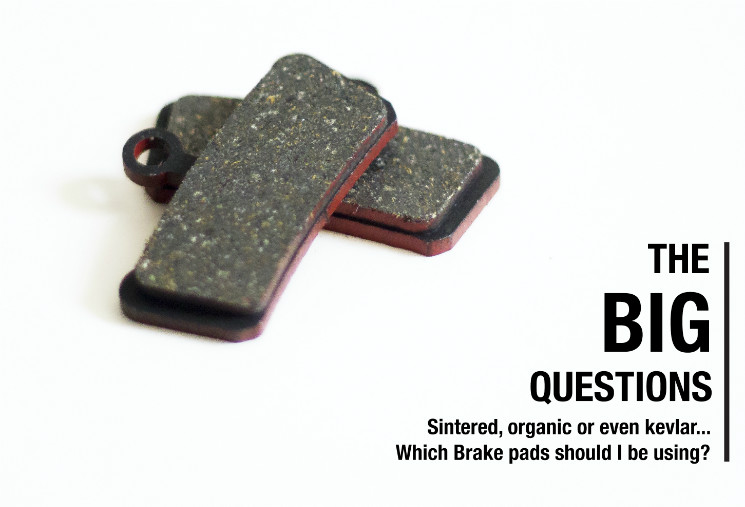The Big Questions - What Brake Pad Compound should I be Using?
11 July 2013 | By AngusMcIntosh | 3 CommentsWhen it comes to choosing brake pads it would be fair to say it's just one of the many minefields when it comes to getting the right components on your bike to match the type of riding you undertake...
You log online to a retailer and find the right size for your brake caliper of choice and then are faced with a decision… What compound do I really need? Organic, Sintered or even Kevlar? Why is one better than the other and will I still be able to stop if I’m on the wrong compound?
I have vivid memories of spending an evening trying to get to the bottom of this problem a few years back and all I could ever find was a whole lot of contradictory information on forums so I shall attempt to brake the trend, and bring the confusion to a skidding halt. (Insert more terrible brake pad puns...)
At this point, most people take the 50/50 gamble and opt for the cheapest option Which is pretty much what I would do anyway! Once bedded in your new brake pads will probably stop you better than the tired old ones you’ve just removed but they might not last as long as you had hoped or just not generate the desired power and bite in certain conditions. This is why we have different compounds of pads!
There are 2 main types of pad out there that you can get from a large range of manufactures to suit nearly all brakes. They are called sintered and organic it’s also possible to get a Kevlar compound which sits somewhere in between the 2.
NB. Using 3rd party brands of brake pads on some manufactures systems can void your warranty so make sure you always take time to read that giant sheet of folded paper that comes with all new bike products in 15 languages that we all just throw back in the box. Unbelievably it may come in use one day…
Sintered Pads
Sintered pads consist of hardened metal ingredients bound together at high temperatures under pressure onto a metal backing that fits inside your brake caliper. It’s very hard to quantify the actual power you will get from as it’s variable on the composition of specific pads but on the whole they will experience brake fade at higher temperatures than organic pads making them the perfect choice for your trip to the alps this summer. They will also be a much better bet in the wet and mud than an organic pad cutting through the slop as opposed to absorbing. They may not have the most bite but as a fit and forget solution sintered pads are the way to go.
Organic Pads
Organic pads are constructed from fibers and organic material bonded together with resin. Typically they won’t last as long as a sintered compound but they will get a bit more bite in dry. Organic pads aren’t really suitable for the wet as the fiber in the pad will take on water and mud eventually hydroplaning on the surface of the rotor. They also don’t cope with heat in the same ways as a sintered pad as the organic fibre insulates the caliper and pushes more heat into the actual disk making them a little more susceptible to fading. Not ideal if you ride in all conditions and don’t have the time to think about changing your pads but you would get a little more bite when used in favorable conditions.
Kevlar Pads
Kevlar compounds like you can get from Superstar sit somewhere in between sintered and organic. In terms of bite, wear and weather performance making them a pretty solid bet for a UK trail rider who is reasonably maintenance conscious.
So now when it comes to choosing your next pair of brake pads it’s less of a stab in the dark and more an educated decision on what’s best the majority of the time.
And always remember It’s rarely ever possible to be on the perfect brake pad at all times but its very possible to be on the wrong compound!
Do you want to read more of this kind of thing on MoreDirt? Tell us what you think in the comments below!



AngusMcIntosh replied on: 11 July 2013 12:36
I think a large part of it is just keeping on top of how much wear you have left in the pads! all the terms and names was just one of those things that had always bugged me that nobody had ever written something like this before (That i could find anyway)! Glad you found it useful!